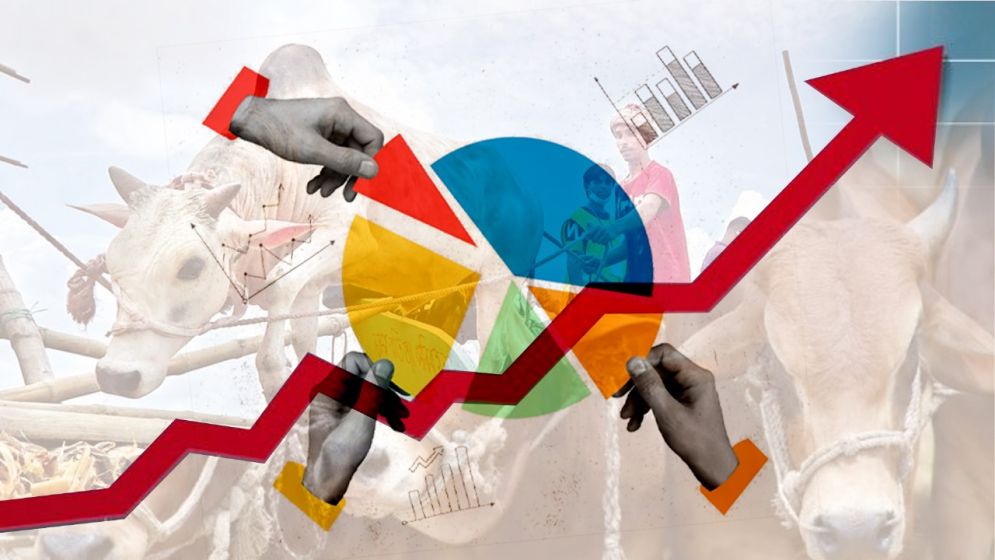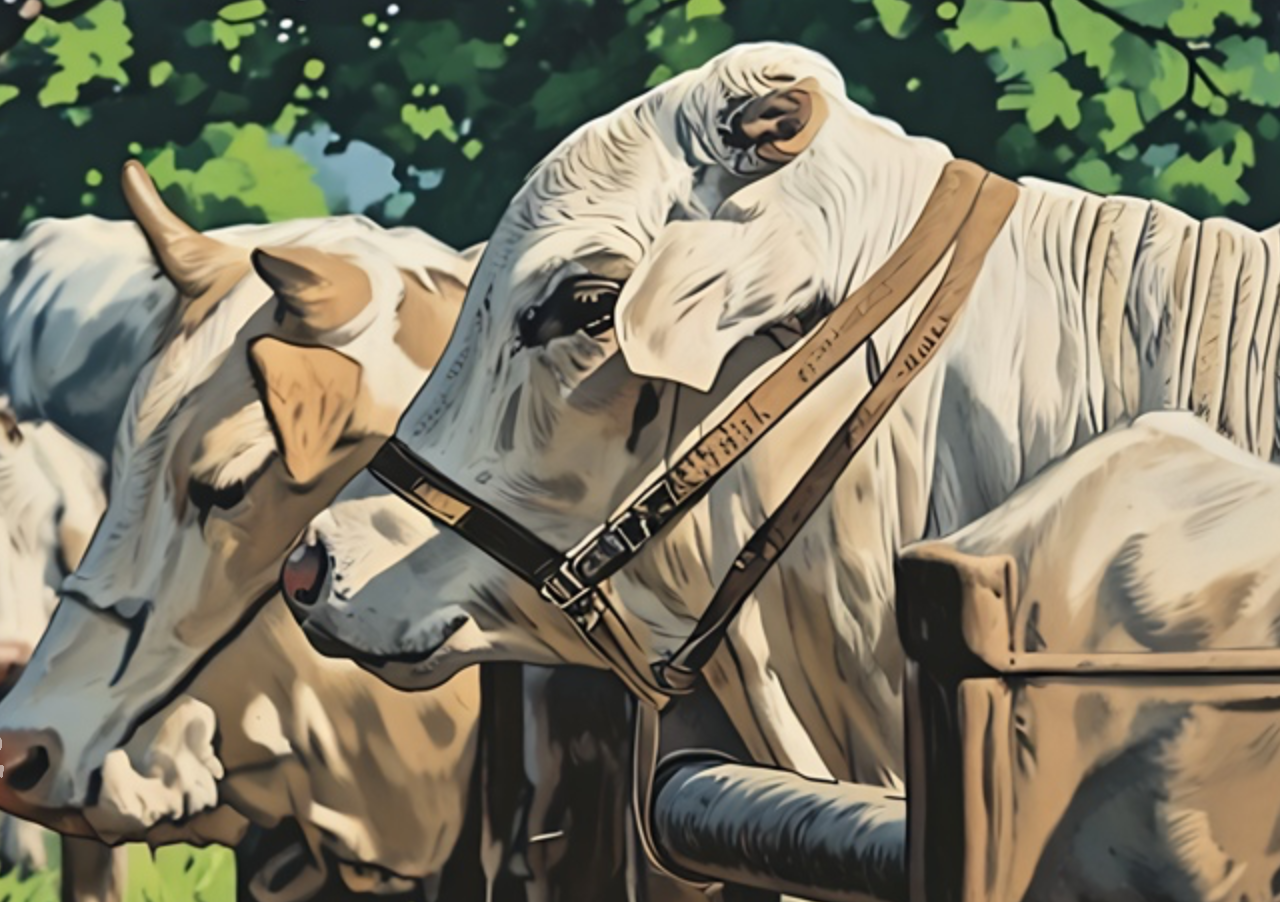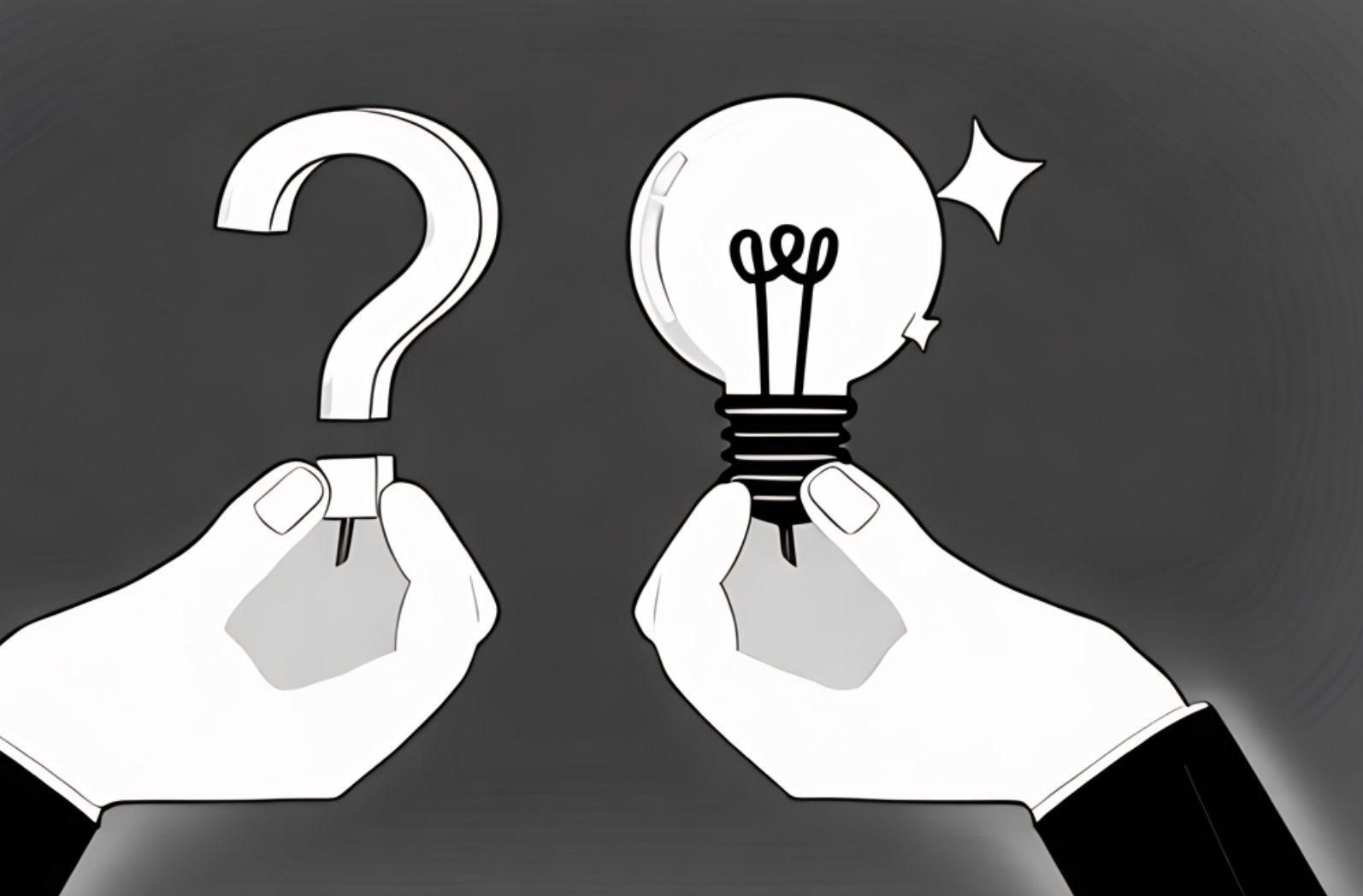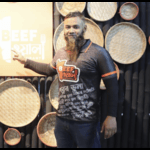Why the demands for smaller cows are growing in Qurbani cattle market

The Eid al-Adha cattle market has undergone a quiet but telling transformation in Bangladesh in the last couple of years.
The once-coveted large sacrificial cows–long seen as symbols of wealth, religious devotion, and masculine pride–are steadily losing their market share. In their place, smaller, humbler animals are gaining favor.
This shift, unfolding over the past few years, is not essentially just about changing consumer tastes; it’s rather a reflection of economic strain, political anxiety, and evolving class behavior in a country where sacrifice is as much about optics as it is about faith.
The most visible culprit is the economy. As inflation bites and currency fluctuations erode real incomes, the extravagant purchase of a cow costing three to four lakh taka has become a hard sell.
Livestock farmers who once raised massive, decorated bulls for high-profile buyers are quietly scaling down, responding to the new normal: customers who can’t–or won’t–spend like they used to. But financial hardship tells only part of the story.
Equally powerful, though less openly discussed, is fear–specifically, fear of being seen. The Sadek Agro goat scandal, in which a single goat’s sale exposed a web of financial and political connections, turned the livestock market into a surveillance zone.
The message was clear: an animal can betray you. The elite, who once flaunted their power by parading massive cows through crowded city streets, now fear that one viral photo could open the floodgates of public and regulatory scrutiny.
For business owners with opaque tax records or government officials with undeclared wealth, anonymity has become more valuable than prestige.
Health has entered the conversation too, though it carries less political weight. Larger cows, often bred and fattened unnaturally for visual impact, produce fatty, heavy meat. Doctors advise against it.
Consumers–especially the growing urban middle class–now lean toward smaller, native breeds with leaner, tastier meat. One former big-spender recounted that after discarding nearly 60 kilograms of fat from a large cow one year, he opted to buy three smaller cows the next–better meat, better value, less waste. His story is no outlier.
Then there’s a final, unexpected twist: the buyers have become the breeders. Several former clients, frustrated with market prices or drawn to the business opportunity, have set up their own farms.
What began as a practical experiment has, in some cases, turned into a profitable sideline–and in others, a convenient mechanism for laundering black money under the banner of agriculture.
Whatever the reason, the result is the same: demand for massive market cows is dwindling.

The implications of new
buyer’s habit
This retreat from collective ritual is also a sign of something deeper: the rise of individualism. The old culture of joint sacrifice–where families, neighbors, or friends pooled resources to buy a large cow–has steadily eroded.
What was once a communal act, requiring coordination, compromise, and camaraderie, has become increasingly solitary. Farmers who now sell smaller cows report the same story from client after client: what their fathers and uncles once did together, they now do alone.
Distance, disconnection, and perhaps a touch of ego have dissolved the team game. No one wants to negotiate logistics or share credit. A small cow, bought solo, is simpler–and symbolically sufficient.
And yet, despite the declining demand, the market for large cows hasn't entirely vanished. One has to ask: if buyers are pulling back, why are farmers still raising them? The answer, as always, is profit.
A single large cow can yield margins comparable to ten small ones. For many breeders, fewer animals with higher returns means less operational complexity and greater reward. And it’s not just about price per head.
Larger cows grow better. In terms of feed-to-weight ratio, they offer superior yield. From a commercial standpoint, raising big animals makes more sense than ever.
Then there is the quiet revolution in cattle production itself. Natural breeding methods have largely been replaced by artificial insemination–not artificial intelligence, but another kind of AI that’s reshaping the genetic makeup of Bangladesh’s cattle.
Small native breeds, once the backbone of the market, are increasingly sidelined. Government agencies, private breeders, and even foreign-backed programs are favoring crossbred cattle–hybrids engineered for faster growth, more muscle, higher resale value.
The outcome is clear: even those who want to raise or buy 100% native cows often can’t. They simply don’t exist in meaningful numbers anymore.
Today’s so-called “Deshal Goru”--the small cows marketed as native–are mostly crossbreeds with a higher percentage of local traits. But purists will tell you the truth: the days of the fully indigenous, low-fat, compact cow are over.
The gene pool has been diluted, the market has shifted, and the language we use to describe our animals has adapted accordingly. It’s market evolution under the pressure of modernization, efficiency, and policy.

Two cents for cattle
farmers
Farmers now need to return to fundamentals. First, raise cows at meat price–not on diets of eggs, milk, fruit, or boutique feed formulas that may look good in Instagram reels but break the bank in real life.
The old rural method–feeding cows household scraps, yard grass, and field straw–was low-risk and sustainable. If a cow didn’t sell during Eid, it could be sold for meat without incurring a loss. That model, dismissed as outdated, might now be the only viable one.
Second, conserving native breeds is no longer just about biodiversity–it’s about economic viability. Indigenous cows are cheaper to rear, more disease-resistant, and increasingly in demand.
Yet thanks to the dominance of artificial insemination programs prioritizing high-yield crossbreeds, fully native cows are nearly extinct. Even farmers marketing “Deshal Goru” must admit they’re selling mostly hybrid animals with dominant native traits.
The market may still want “local,” but the supply chain says otherwise.
Third, scale must be balanced with sense. Hybrid farming–raising mostly small cows with a few larger ones–allows producers to meet shifting demand while still maintaining profitability.
Ratios should be calibrated to client bases. Our own plan for this year is simple: 70 percent small cows, 30 percent large. That’s not branding–it’s survival math.
And finally, the real branding battle is not over cows, but meat. Market butchers flood the system with inferior product—underweighed, water-injected, and sometimes from sick or dying animals.
That meat, inevitably cheaper, becomes the benchmark against which farm-raised beef is unfairly judged. The result? Farmers are forced to justify higher prices for vastly superior meat. Yet no one questions why native chicken costs more than broiler.
The same logic must be applied to beef. It’s not just a pricing issue–it’s a literacy issue. Customers must be taught to taste the difference.
—-
Sagor Hasnath is a former government employee turned-entrepreneur. He is the CEO of Ahlan Agro.

